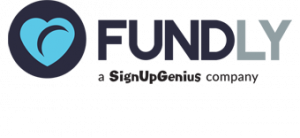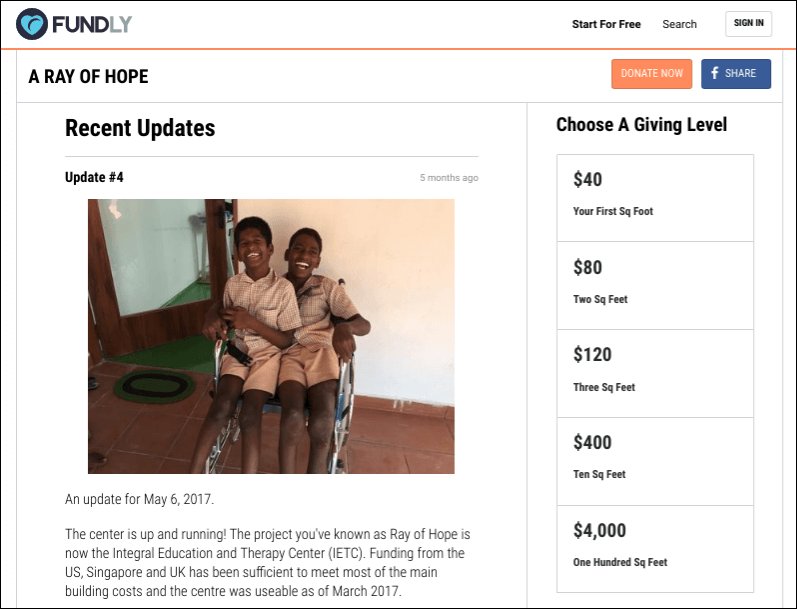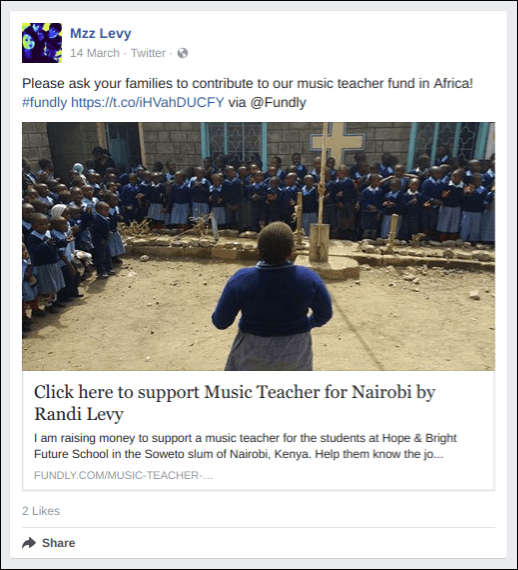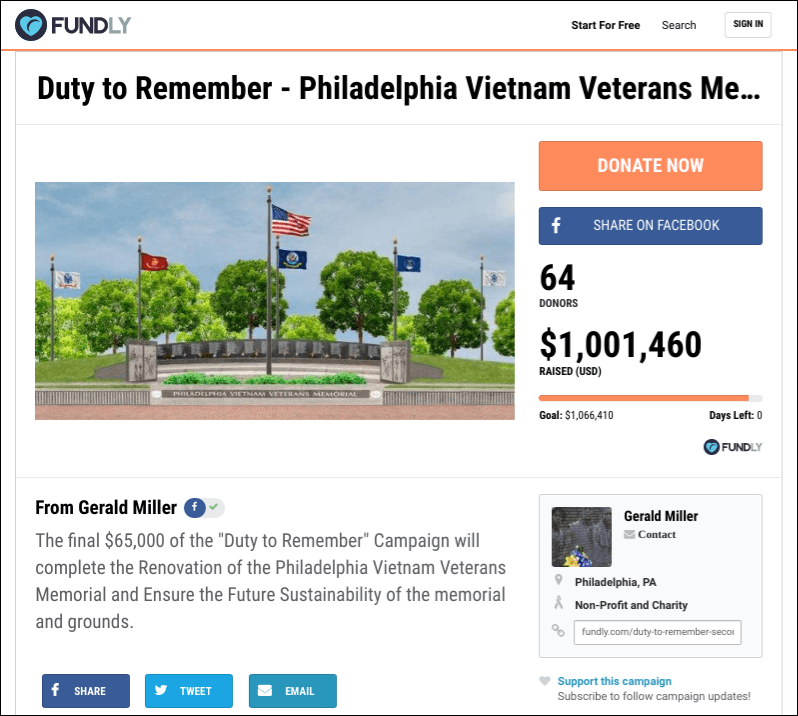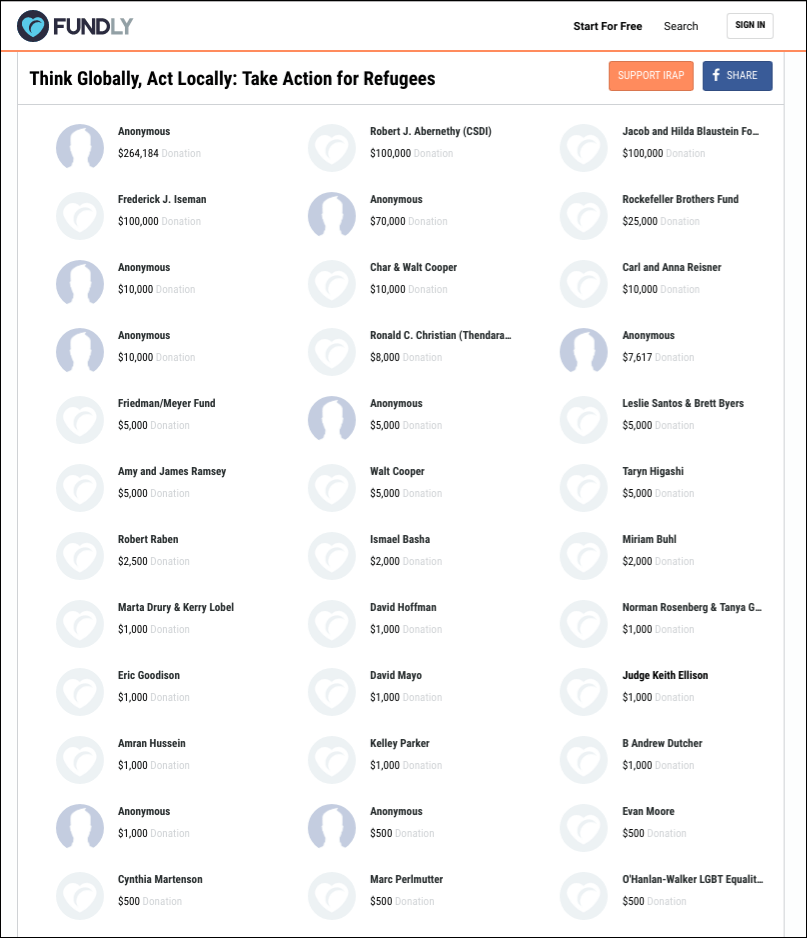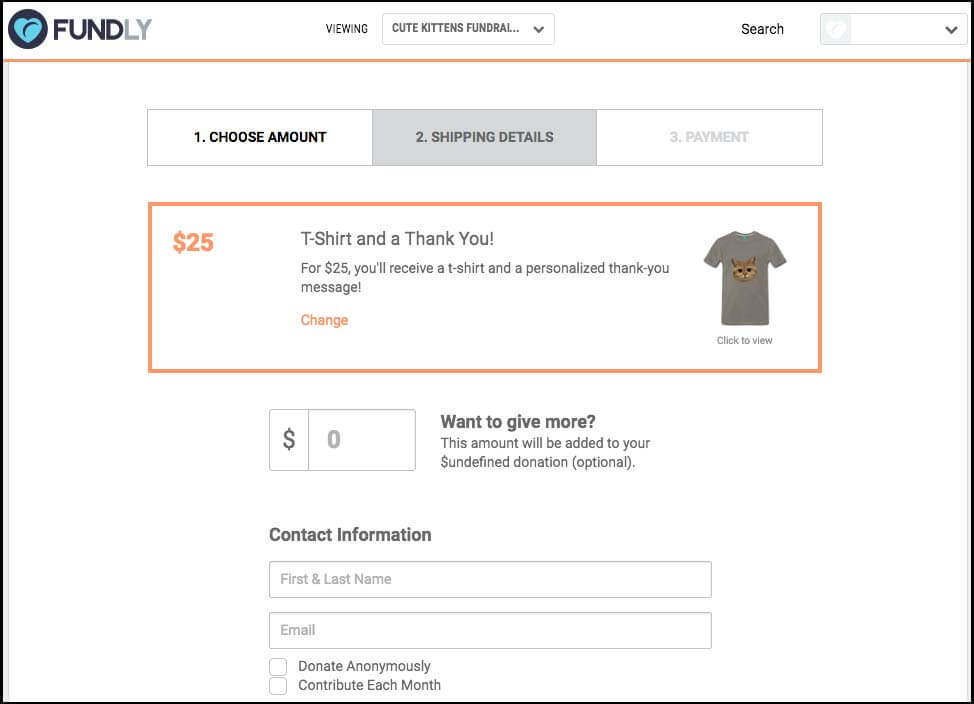Donor Stewardship Expert Advice from 29 Industry Leaders
Donor stewardship is one of the most, if not the most, important activities a nonprofit does. That being said, it can be a tricky beast.
NonProfitEasy’s team has compiled advice from a variety of experts from the nonprofit sector on how nonprofits can perform effective stewardship for their donors.
Listen to your donors
You’d be surprised how much you can learn about your donors if you’re willing to listen! If you develop trusting relationships with your donors they’ll be the only focus group you ever need.
Amy DeVita, Chief Operating Officer at Third Sector Today and Top Nonprofits, says:
“Although I’m not personally involved in nonprofit fundraising, I’m very fortunate to get to interview some incredibly successful nonprofit leaders in my line of work! The best practice that I’ve heard time and time again: “Listen” to your donors.
At first blush, it may seem counter-intuitive that “listening” is more important than “telling,” “suggesting,” or “asking.”
But, by listening, you are letting your donor tell you how they want to be further engaged with your cause— and they will be charting the course to a successful and more meaningful relationship for you to follow.”
Vanessa Chase, Fundraising Consultant and Owner of The Storytelling Non-Profit, says:
“Survey your donors! If there’s one tip that I think can make a big difference for stewardship plans it’s to do a donor survey.
Send one annually that includes 5 to 7 questions about donor demographics and their overall satisfaction. It can provide non-profits with vital data points about their donor audience and how they can better steward their audience.”
Craig Linton, Founder of Fundraising Detective, says:
“Never miss an opportunity to get feedback from your donors. Not only does it strengthen your relationship, but it can identify common problems that you can solve to improve your donor experience.”
For more great fundraising tips, check out our ultimate CRM tip sheet!
Quality over quantity of communications
Donors who have given to multiple nonprofits are likely inundated with follow-up communications. Make yours stand out by ensuring they’re high quality and meaningful!
Kivi Leroux Miler, President of Nonprofit Marketing Guide.com, says:
“So many nonprofits send bad thank you letters – if they send them at all! Nonprofit thank you letters need to be thought of as a very important, highly strategic piece of communication.
A thank you is NOT just a tax receipt. It should look like a personal letter from one friend to another. Ditch the predictable openings like “Thank you for your gift of…” or “On behalf of our organization…” Draw in the donor immediately by placing them front and center. Something as simple as “You made my day…” is much better.
A great thank you is the first step in creating a relationship with your donor that will inspire them to give again and again.”
Tom Ahern, President at Ahern Donor Communications, says:
“A prerequisite for above-average donor retention is a well-planned, donor-centric communications program that begins with a welcome.”
Jeff Schreifels, Senior Partner at the Veritus Group, says:
“It’s sad, but just like we’ve all become accustomed to bad or mediocre customer service and we accept it, it’s the same with donors who give large, multi-year gifts. They have come to expect very little of us.
This is where you can have an advantage over other charities. Your mindset should be that because they gave a gift, I’m going to do the unexpected and cultivate them so wonderfully that they can’t wait to make their next gift.”
For more great fundraising tips, check out our ultimate CRM tip sheet!
True gratitude will make all the difference
It’s because of generous donors that your organization has the opportunity to make a difference. Make sure they know how important they are by thanking them early, frequently, and in a variety of ways.
Chris Moore, Executive Vice President of Innovairre, says:
“In today’s fundraising environment, where retention is the new acquisition, the days of having a revolving door of endless new donors are long gone!
The need to thank donors promptly and personally is more critical than ever.
After all, it’s not the first gift that’s most important – it’s the second, and first impressions count; you have to earn the right to ask again!”
Claire Axelrad, Principal at Clairification, says:
“Effective stewardship can be summed up in two words: gratitude and impact. Think hard about what you’re grateful to your donor for.
It’s not money; it’s the impact they’ve made possible. Tell them; show them.
It doesn’t matter how great your relationship is now. If you don’t demonstrate repeated gratitude and/or can’t show your donor their money is creating an impact, there won’t be much of a relationship for long.”
Joe Garecht, Founder of The Fundraising Authority, says:
“Your non-profit would not exist without your donors. So why not start treating your donors like the essential members of your team that they really are?
Your donors are the heroes of your work… your program staff and volunteers are important, but your donors are essential. Make sure they know that!”
For more great fundraising tips, check out our ultimate CRM tip sheet!
Always connect donors with your organization’s mission
A charitable donation doesn’t happen in a vacuum. Make sure your donors or potential donors know where their money is going and the difference that they’re making to your organization.
Marc Pitman, Fundraising Coach at The Nonprofit Academy, says:
“One of the most important things to do in donor stewardship is connect the donor to the mission. We need to bring donors into what my friend, Shanon Doolittle, calls these ‘mission moments.’ We often overlook these because they’re things our nonprofit is doing on a regular basis. But these are exactly what the donor is investing in. And since they’re happening on a regular basis, it doesn’t take a lot of programming or organizational inconvenience to bring donors in.
The best part? When non-fundraising staff see donors get excited about their work, the non-fundraising staff start willingly helping with the fundraising!”
Sarah Bernstein, Founder and Owner at Philanthrodata, says:
“I would suggest that in acknowledgements and reports to donors, that nonprofits emphasize what they can accomplish with and because of donors, what donors have made possible, rather than a litany of the organization’s achievements.
For example, they could talk about what it means to the people they serve to know that the community (of donors) believes in their potential and has demonstrated that by investing in their future. Also, they should pay attention to the people who pay attention to them, especially the donors who follow them in social media.”
Lomesh Shah, Founder and CEO of NonProfitEasy, says:
“Too often, nonprofits will separate fundraising activities from their ‘mission’ as an organization.
We try to encourage nonprofits to always link any monetary solicitation with a tangible outcome.
This is an easy way to show donors that their donation is making a difference and showcase process after a fundraising campaign.”
Remember to follow up, and follow up, and follow up!
Donor stewardship is not a one and done sort of activity. It’s an ongoing relationship with donors that your organization should constantly be looking to deepen, develop, and grow.
Julia Campbell, Principal at J Campbell Social Marketing, says:
“Donor stewardship does not mean just sending a thank you note and then contacting the donor again the next time you need money.
No. You need to tell donors how the gifts made an impact and continue to build the relationship with them.”
Eric Rardin, Vice President at Care2, says:
“Committing to year-round stewardship will retain current donors and recruit new repeat donors. Their funds are an extension of their faith in the organization and the missions, so remember: you’re not only stewarding their money, you’re stewarding their trust.
Care for your donors by investing in them — send a personalized thank you note; a formal, written thank you note; mid-year update; and a personalized ask the following year.”
Brian Dowling, Principal and Founder at SupportingFundraising.com and SupportingAdvancement.com, says:
“One of the most important stewardship activities are reports sent to donors on a periodic basis informing them about what has been done with their investment in your organization. “
For more great fundraising tips, check out our ultimate CRM tip sheet!
Find ways to engage donors of all donation levels
Having industry leading donor stewardship means you are engaging potential donors at all giving levels, ages, and exposures to your nonprofit. Think about the different ways your organization can find opportunities to interact with organizations of all types.
Alex Saavedra, Digital Marketing Manager at Greater Giving, says:
“Young donors are hands-on and serious about helping. The common thing among young donors is the desire to be involved—especially when working on limited budgets, the amount they care and want to participate may not be matched by how much they can give.
A donor is a long-term investment—if these donors have a positive experience with your organization when they’re young, they’ll continue donating long into the future when they have more disposable income.
Provide opportunities for young donors to get involved in other ways besides donating (such as volunteering and hosting their own local events such as a 5K).”
Bill Tedesco, CEO of DonorSearch, says:
“Prospect research can help your front-line fundraisers identify which donors have the capacity to give a major gift and a history of past philanthropy.
This will enable your development team to ensure that those major donors receive excellent stewardship to keep them engaged for years to come!”
Brian Lacy, Owner at Brian Lacy and Associates, says:
“Annuals funds are a great way to cultivate a strong pipeline of donors who have the potential to make a major donation down the line. The secret to your success in this effort will be your organization’s donor stewardship program!”
Focus on stewardship, not solicitation
Soliciting donations is only one part of donor stewardship. Make sure your communications with donors are varied so they’re receiving a diversity of information about your organization.
Farra Trompeter, Vice President at Big Duck, says:
“Celebrate your donors and make them feel like heroes. Highlight your accomplishments as theirs!
Highlight what your donors care about. Not sure what that is or why they give? Ask them via phone interviews or surveys.
Don’t just ask donors to give. Make sure to book-end any appeal with non-donation actions, updates on results, and word of thanks.”
Erik Anderson, Founder & President of The Healthy Non-Profit, says:
“Donors are not ATMs, they are people with wishes and dreams. Your job as a fundraising professional is to help people realize those dreams. You are not a mugger lurking in the shadows trying to snatch a donor’s wallet or purse. If there is one guiding principle that is paramount to all other fundraising best practices, it is treat your best donors like you would your childhood BFF.
- Check-in with them from time-to-time.
- Care about what is happening in their life.
- Put their needs ahead of your own.
- Spend time with them figuring out what they want their philanthropy to accomplish and then show them how your organization can help them accomplish their goals and dreams.
The more personal you can make your cultivation, solicitation, and stewardship interactions, the stronger your relationship will become. Philanthropy done right can be enriching for all parties involved!”
Bond Lammey, Senior Associate at Bentz Whaley Flessner, says:
“Put as much effort into creating a stewardship plan for your donors as you do in creating cultivation/solicitation plans. Your best future donors are your current donors, and if you neglect to demonstrate how much you appreciate your current donors, you run the risk of losing them as donors.
On a slightly related note, I recently made a first gift to an organization. About six weeks later, I got a letter in the mail from them. While this was a long time to wait for a thank you letter, I was glad to see it in my mailbox.
I opened it up…only to discover that it was a solicitation!
I was being asked for another gift before I had ever been thanked for the first one!”
Eliza McNulty, Board Member at the Associaton of Donor Relations Professionals, says:
“To be truly donor-focused, donor relations and stewardship programs must find the sweet spot between developing policies & procedures, gathering donor feedback and exhibiting empathy.
We must step into the shoes of our donors, aim to understand their feelings and perspectives, and use that understanding to guide our actions.”
For more great fundraising tips, check out our ultimate CRM tip sheet!
Mix up how you do donor acknowledgement
There’s more to donor communication than email and direct mail. Mix up how you interact with donors to separate your organization from the rest!
Joanne Fritz, Nonprofit & Charitable Organizations Expert at About.com, says:
“Multi-channel fundraising is a hot topic, though no one talks about multichannel thanking. Consider thanking by snail mail just another channel for your campaign.
Many people who receive your direct mail appeal likely respond by going to your website and donating. It’s a matter of convenience, not dislike of the mail.”
John Haydon, Digital PR and Fundraising Expert at Inbound Zombie, says:
“Social media empowers donors to share stories about the causes they care about. If they care enough about yours to make a donation, they’ll care enough to share your campaign on Facebook, Twitter, etc.
One of the best places to promote sharing is on your “thank you” pages. These are the first pages donors see after clicking “donate”, so the likelihood they’ll share the campaign is relatively high.”
Adam Weinger, President of Double the Donation, says:
“Make sure to include matching gift appeals in your donor acknowledgements. It’s an easy way to let donors know that they might be eligible to double their donation!”
Transparency and trust come first
If your organization is doing great work and making a positive difference in the world then don’t hide it! Be open and honest about how you’re using donations or where your organization is looking to improve in the future.
Larry Johnson, Founder of 8 Principles of Sustainable Fundraising, says:
“Seemingly counterintuitive, freely and openly admitting your mistakes, is one of the most powerful forces in renewing your donors. Total transparency—the good, the bad, and the ugly.
What does this do? It shows your respect for your investors and gives you the ability to continue making promises going forward. It’s one of those ironies of life.”
Erin Moyer, President at the Association of Donor Relations Professionals, says:
“To keep donors coming back, you must not only show them that yours is a quality organization with a solid reputation, but also one they can trust with their money.
After a first gift, each experience and touch you give your donor will help them further identify with your mission and ultimately strengthen your relationship.”
For more great fundraising tips, check out our ultimate CRM tip sheet!
Use technology to make your donor’s lives easier
Technology is revolutionizing the nonprofit sector by making it easier than ever for donors to engage with causes they care about. Figure out how your organization can embrace technology to make the donation process and stewardship process as simple as possible for prospects or donors.
Meagan Nordmann, Digital Marketing Lead for @Pay, says:
“In order to keep an ongoing relationship with your donors so that they become repeat donors, organizations must be sure that the online donation process is as simple as possible.
Currently, most nonprofits require donors to visit multiple web pages, or remember a username and password, or download an app, or enter 57 keystrokes of payment information every single time they want to give.
There are express checkouts now that let donors give in just a few clicks, no matter what device they are giving from.“
Rafi Norberg, President of Helperful, says:
“Linking to your donation pages or including call-to-actions at the bottom of your virtual communications will encourage some percentage of the folks who visit your website to become first-time donors.
This is a simple, automated way to improve your inbound donation pipeline.”
